How to Make an IoT App: Benefits, Tech Aspects
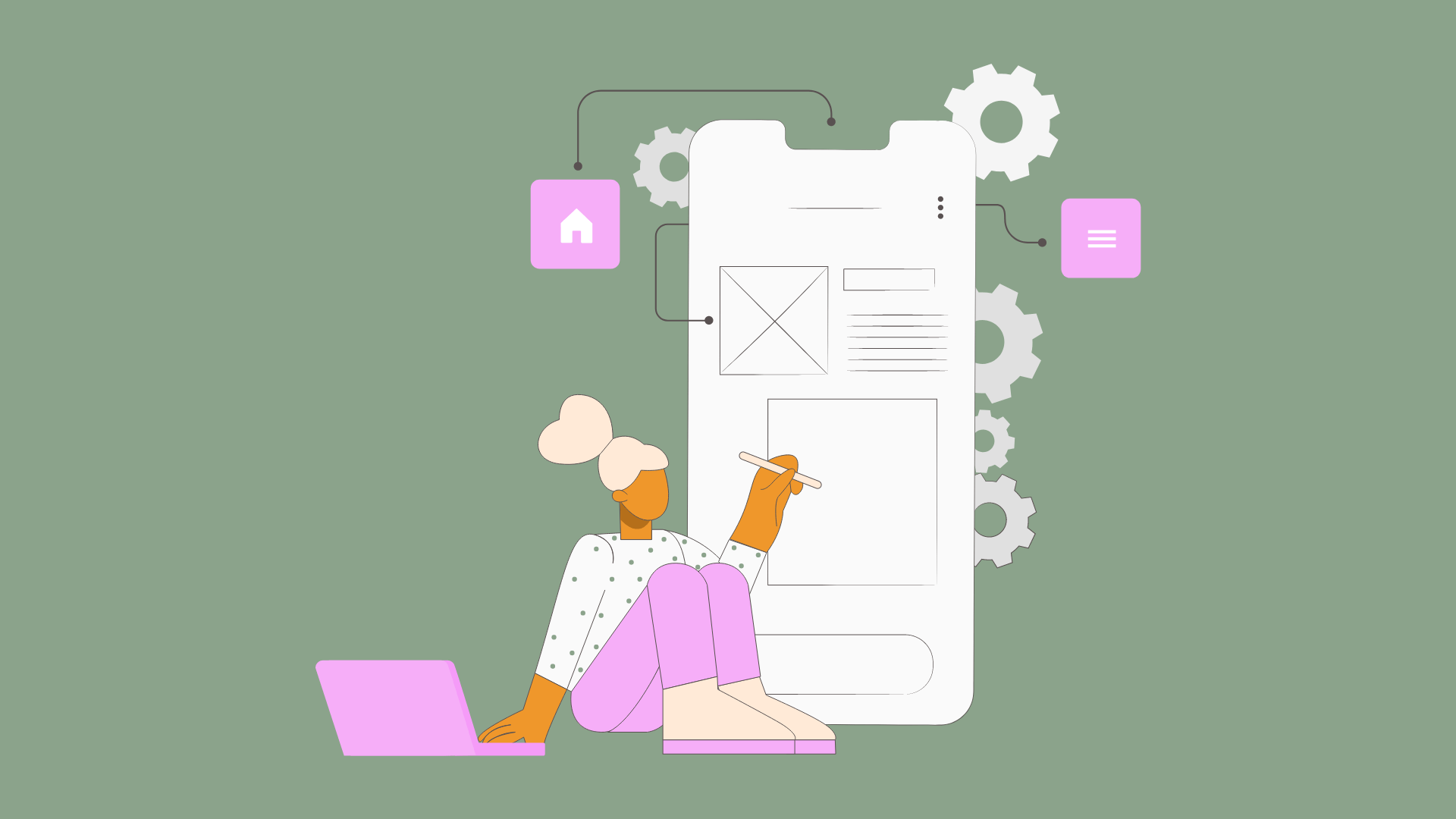
The Internet of Things industry is moving through the uprise times.
The future is here. Everything we once saw in sci-fi movies, like flying cars without drivers, homes that may answer you back, an intelligent assistant that knows everything before you even think about it. Everything is real and even more.
If you’ve ever thought about how to make an IoT app, it’s the right time to start the investigation. This article will speed up the research process and answer some of the most critical Internet of Things app development questions.
Here is what is waiting for you inside:
- Why create an IoT app in 2024
- Key industries benefiting from IoT app development
- The most impressive examples of IoT applications
- Benefits & challenges of IoT application development
- The architecture of IoT
- IoT app development software
- Major steps of IoT app development
- Cost to create IoT mobile app
Dive right into the article and learn how to make an IoT app in 2024.
What is IoT & Why Create an App in 2024?
The Internet of Things is a comparatively new concept in the technology world. The term IoT was designed in 1999 by Kevin Ashton to describe a technology that connects a number of devices into a single network.
What is IoT?
The term refers to the network of interconnected devices that exchange information within the network without human interaction. Such solutions can use any interconnection method, including cable and wireless technologies. The process behind the connection of such devices is called the machine-to-machine (M2M) principle.
Why should you consider the Internet of Things technology for your business?
Take a look at some of the most promising statistics, clearly showing that this technology won’t stop at what's already been achieved.
- The IoT technology market that has undergone a dramatic rise. In 2023 the market was valued at $925.2 billion. With an expected growth at a CAGR of 13% during 2023-2026, the global IoT market will reach $1334.1 billion.
- The global IoT healthcare market will reach $14 billion by 2024.
- The Global IoT medical devices market will top $94.2 billion by 2026 and show a 15,27% CAGR.
- The number of IoT connections will top 83 billion by 2024, showing steady growth with each upcoming year.
Without the slightest doubt, the Internet of Things is one of the most promising future technologies. Many industries can benefit from it, and we’ll talk about them in the next chapter.
Key Industries for the Internet of Things App Development
Before we talk about how to make an IoT app, you need first to understand how such a solution can benefit your business.
Just take a lot at the image below showing the global IoT market share by sub-sector.
Below is the list of areas where IoT technology can deliver the highest value:
- Smart homes – automated house management systems are being actively developed. Today, you can find IoT solutions for security management, water consumption, electricity, heating systems, and other solutions used in smart homes. One day, smart homes will turn into smart cities, more efficient and safer to live in.
- Healthcare – thanks to IoT, the healthcare industry has progressed a lot. Various devices and wearables track patients’ health, including heart rate, glucose levels, physical activity, and much more. We have a guide telling how to build wearable applications, so check it out.
- Automotive – Apple Play and other technologies allow you to connect your smartphone to a car and control some of its features. The future offers to bring even more exciting capabilities, such as parking a car remotely, summoning it, etc.
- Logistics – this industry could benefit from IoT devices the most. The use of RFID tags, GPS trackers, antennas, and chips can help track and monitor the location and movement of the transported goods.
- Retail – Amazon Go is the brightest example of what IoT can do in the retail industry. Automatic checkout allows to reduce costs and improve customer experience. In the future, IoT solutions will help track visitors’ actions, improve their experience, and make offline retail locations more efficient.
- Smart farming – this industry is often overlooked when it comes to IoT development. Such devices can be used in agriculture to monitor conditions, such as air temperature, humidity, soil quality, detect soil contaminations, automate irrigation systems, and much more.
These are just a few areas that can benefit from the Internet of Things.
Key Aspects of IoT App Development
Before you decide whether you need to create your own IoT solution or not, consider the benefits and challenges you can face on the road.
- Cost efficiency
Thanks to the option of IoT solutions in day-to-day operations, companies can reduce costs related to daily tasks. For example, equipment monitoring can help predict possible problems and minimize downtown.
- Customer behavior insights
Internet of Things solutions can be used to collect data on user behavior. For example, a company can utilize tools that monitor customer behavior on a website, on social media, and across offline locations derived from the surveillance system to track customer behavior and adjust the provided services accordingly.
- Enhanced productivity
The adoption of IoT technology improves productivity, especially in manufacturing and the automation of critical processes. IoT solutions can help manage the processes, monitor equipment state, and notify about possible problems and dysfunctions.
- Better customer experience
The network of interconnected devices provides a lot of data that can be used to improve customer experience. Such solutions help identify problems and effectively address them at the early stages.
- Better work safety
IoT applications in high-risk environments can collect data in real-time and identify any issues that can turn into potential threats. Thus, employees of such companies can enjoy a safer working environment.
Internet of Things Application Development Challenges
The development of IoT mobile apps is a process comprising different stages. It’s associated with challenges you need to overcome during the development phase.
Here is a short list of issues you need to be prepared for:
- Security
Security is one of the most challenging parts of IoT development. Interconnected devices create many entry points that hackers can exploit to gain access to the transmitted information, user location, and other valuable data.
- Privacy
Data stored and transmitted by IoT devices must be encrypted to protect it from leaks. Storage, processing, and transmission of unencrypted data can lead to vulnerabilities and holes in security.
- Reliability
IoT solutions require a stable connection to the Internet. When the internet connection is lost, the entire system goes offline. That’s why it’s your job to ensure that the IoT can provide basic features even in offline mode.
- Technological inconsistency
The market is full of devices that can be connected to your Internet of Things. However, it’s very challenging to ensure technological inconsistency. For example, solutions for smart homes are diverse, and not all can be compatible with your application, creating one of the biggest challenges. The IoT application development process can go sideways if you don’t have enough knowledge and expertise. Continue with the article to learn how to make an IoT app avoiding any issues, money, and time wastage.
IoT App Development: Architecture Basics
This section of the article highlights the technical point of view of app development and IoT components.
Four main components for the Internet of Things system:
- Hardware
- Software
- Cloud
- Network
You can see the architecture of an IoT project in the image below.
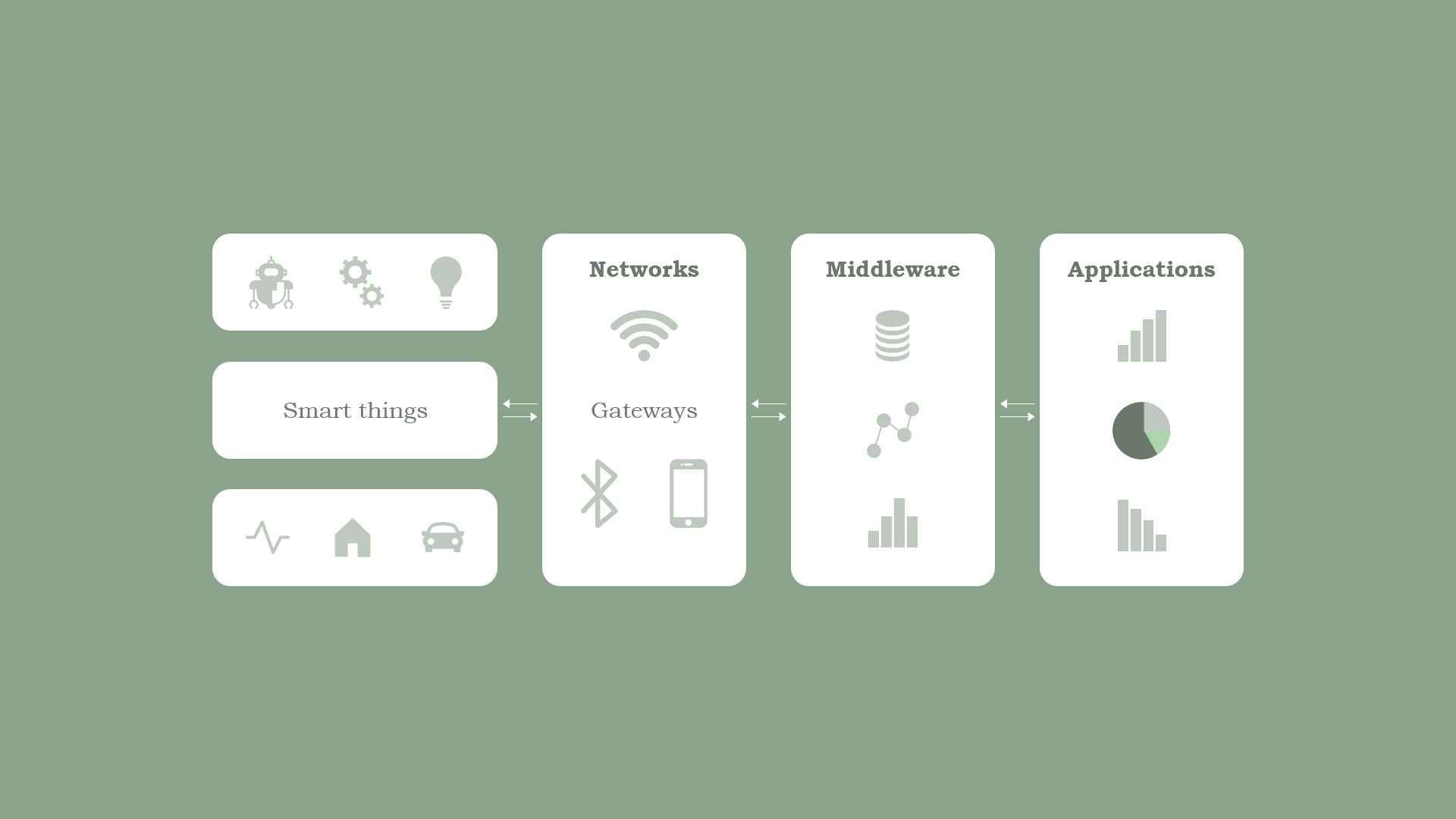
Let’s review each component in more detail.
- Hardware
Hardware means using low-energy sensors that connect to the internet and interact over Bluetooth or Wi-Fi. You can either create a device addressing your needs or use one of the existing solutions. Mobile devices used to control the Internet of Things system also relates to hardware solutions.
- Software
Software is used to manage and control all connected IoT devices. Such software can be cloud-based, web, or mobile. Also, depending on the type of controllers, you might also need to develop dedicated software for IoT devices.
- Cloud
Cloud is the most important part of the IoT system. Cloud stores all the data and performs processing and analysis operations. Interconnected devices send data to the cloud, responsible for the connectivity between devices.
- Network
The network allows for data exchange between sensors and controlling devices, such as smartphones and tablets. The network links all the devices, hence the name interconnected devices.
Platforms and Tools Used to Build IoT Applications
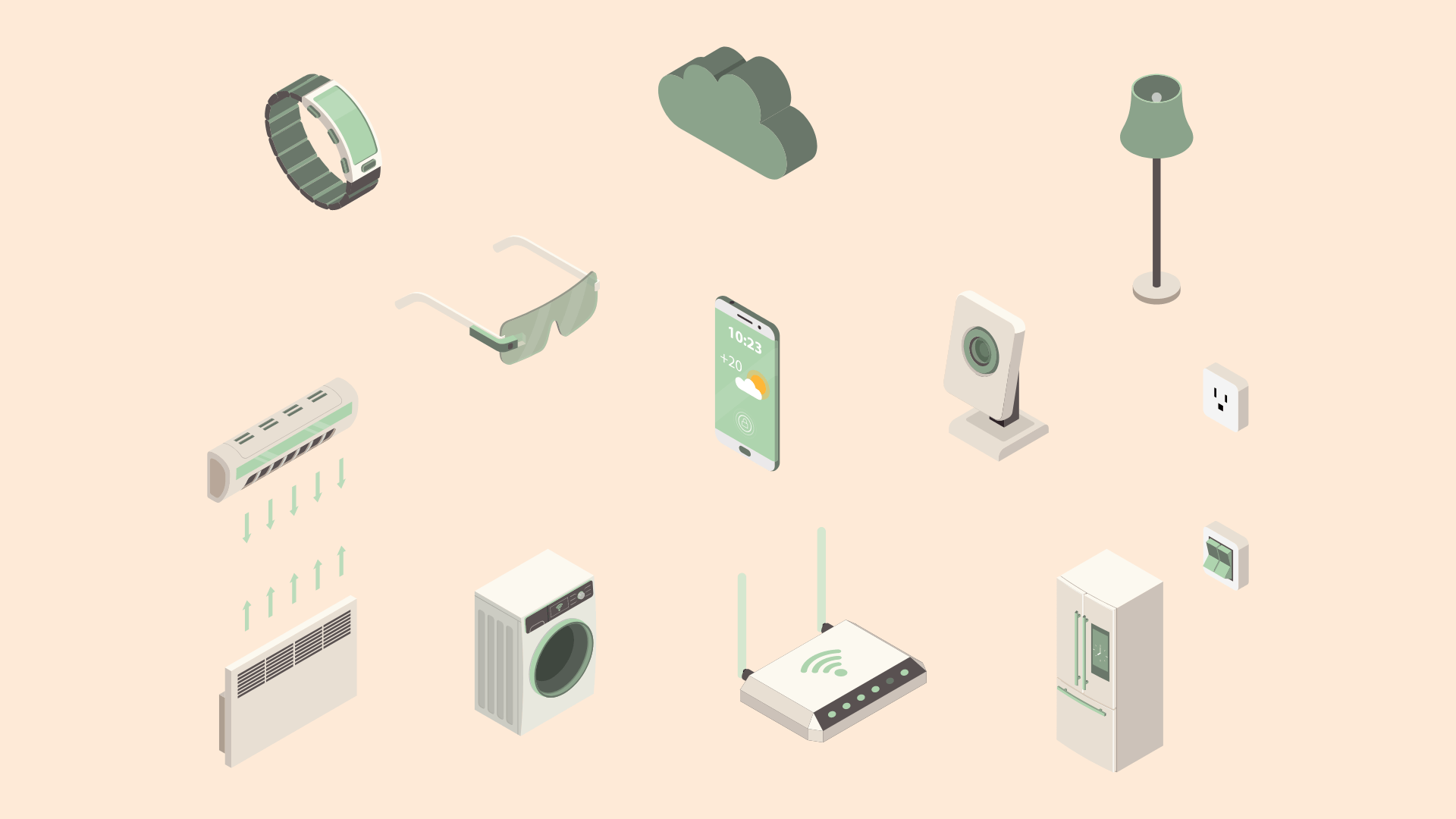
To fully learn how to make an IoT app, you need to understand what tools can be used to create such a solution.
Communication between the devices is the most important part of the Internet of Things. The following list demonstrates some of the most popular communication protocols you can use today:
- WiFi – for indoor use such as home and offices.
- RFID/NFC – for solutions that require card-based access
- GSM/GPRS –used for standalone outdoor devices
- Bluetooth – for wearables and devices that connect to a smartphone.
- LoRaWAN – used for public and industrial infrastructure products requiring 3-5 km range communication
- NB-IoT – cellular communication technology designed for IoT solutions.
IoT systems also need messaging communication protocols:
- HTTP – for single requests
- HTTP WebSockets – for continuous communication
- MQTT – the most popular protocol in IoT that is flexible and lightweight
- AMQP – open-source messaging communication protocol with the support of queuing, routing, etc.
Aside from the above protocols, you will need to use one of the IoT app development platforms. The choice of the platform fully depends on your specific needs and the terms of use for each solution.
The table below showcases some of the most popular Internet of Things app development platforms.
| IoT platform | Key features | Device management | Price |
| Google Cloud Platform | Suitable for multi-layer secure infrastructures AI and ML capabilities Supports a wide range of embedded operating systems Location intelligence | Yes | ~ $1800/month |
| IBM Watson IBM | Bidirectional communication facility AI and analytics Security and flexibility Real-time data capturing | Yes | $500/month per instance |
| Amazon AWS IoT Core | HTTP and MQTT support Processing of huge amount of messages Compatibility with other services by Amazon (Lambda, Kinesis, QuickSight) | Yes | Depends on the number of features |
| Open Remote | HTTP, TCP, UDP, Websocket, & MQTT protocols | Yes | Open Source, free |
| ThingWorx | Devices connection Data analysis On-premise web servers, off-premise cloud apps, or hybrid environment. | Yes | Upon request |
To make the right choice between the IoT platforms, you need to know how to make an IoT app from a technical point of view. The process requires deep technical knowledge and an understanding of how each of the protocols works. That’s why many companies choose to work with a software development vendor providing IoT application development services.
How to Make an IoT App: 5 Key Steps
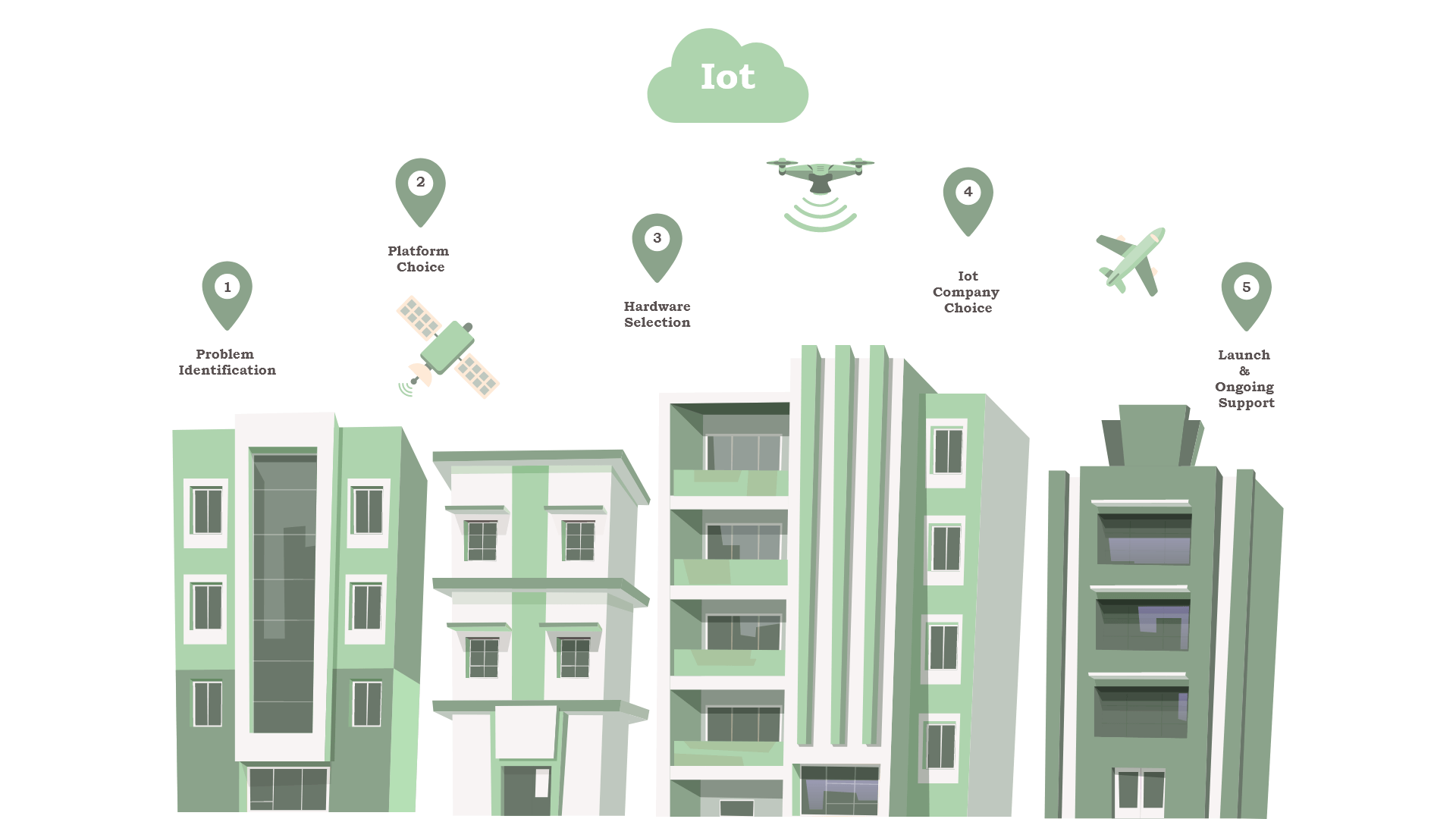
This part of the article will navigate you through IoT system development. It will help you understand how to make an IoT app and turn it into a seamless process.
Identify a Problem
If you are at the crossroads of where to start, begin with identifying the problem you want to solve with the help of an IoT system.
You can either create a solution for internal needs or develop an application and turn it into a startup and application to be used outside your company. If you choose the latter option, you will also need to conduct market research to identify your competitors, target audience, and customer needs.
Choose a Platform
As you already know, there are many IoT app development platforms that you can use to build your own solution.
Aside from the tools mentioned above, you can also choose to develop an IoT application with the help of Android Things or HomeKit. Both platforms try to solve the problem of hardware inconsistency, allowing connecting devices of different manufacturers into a unified system.
Select the Hardware
You can either create your hardware for your IoT solution or use one of the existing ones.
If the latter is the option, you might need to choose microcontrollers and microprocessors. Possible options include Arduino Uno, Mega, ESP8266 or ESP32 boards, STM32F boards, Raspberry Pi, Beagle bone, etc.
Choose an IoT Application Development Company
Finding a company that nailed IoT development is not an easy task. Thus, you need to look for vendors that:
- Have previous experience in IoT app development
- Successfully developed and released projects
- Positive reviews from previous and current customers
The vendor you choose needs to be able to help you build an IoT system and launch it to the market.
Launch & Ongoing Support
When choosing between development vendors, choose the company that provides ongoing support services. After the IoT solution is launched, you will need to update its software, keep its security features up to date, and add new functionality.
How Much Does It Cost to Develop an IoT App?
Internet of Things application development cost starts at $80,000 and can reach up to $250,000 depending on the app’s complexity. If you decide to build your own hardware, you will need to pay for that, too, and it might increase the cost even more.
Several factors influence the final cost of development:
- Size & location of the software vendor – you can outsource app development to a freelancer, a local company, or an offshore development agency. You need to choose a company that will meet all your requirements and offers the best options.
- Project complexity – the cost depends on the number of features for implementation, the architecture of your IoT system, and the need to create your hardware.
- UX/UI design complexity – you might need to create an app with a simple user interface. In some cases, you need to go for an advanced user interface offering animations, unique branding, etc.
- The number of platforms – the number of platforms you are targeting, Android, iOS, web, or all, directly influence the final development cost.
Usually, the app development cost is calculated this way:
- A small IoT app with basic functionality will cost you around $80,000
- A more complex app (with its database, for example) will cost $100,000-$150,000
- Complex app with a lot of features will cost from $150,000
How to Make an IoT App: Final Thoughts
The Internet of Things is a technology growing at a most incredible pace. IoT technology can disrupt almost all industries, including automotive, smart homes, healthcare, logistics, and much more.
internet of things app development, iot app development, How to Make an IoT App, Smart Watch Application Development, Custom eLearning Development, e-learning app development, Online-Conferencing, Online Meetups, IOT Development
Do You Have an IOT App Idea?
Dive into the Internet of Things with your own IoT app
Our Expertise Covers:
✅ IoT device integration and connectivity
✅ Real-time data processing and analytics
✅ Secure and scalable IoT app development
FAQ
If you don’t know how to make an IoT app yourself, you’ll need to hire a development vendor. The cost to build such a solution may vary anywhere between $60,000 and $250,000. Several factors include the final costs, such as outsourcing location, software development company size, region, etc.
The market of IoT devices will reach $1.3 billion by 2026. The number of IoT connections will top 83 billion by 2024. There is a lot of evidence indicating that the industry of interconnected devices will only grow in the foreseeable future.
IoT solutions are used to develop industries, including smart homes, healthcare, automotive, logistics, retail, smart farming, and many more.
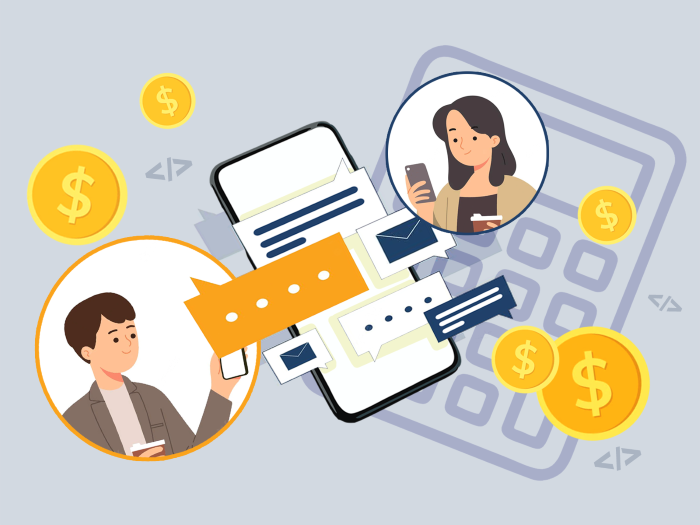 How Much Does It Cost to Build a Messaging App?
How Much Does It Cost to Build a Messaging App?
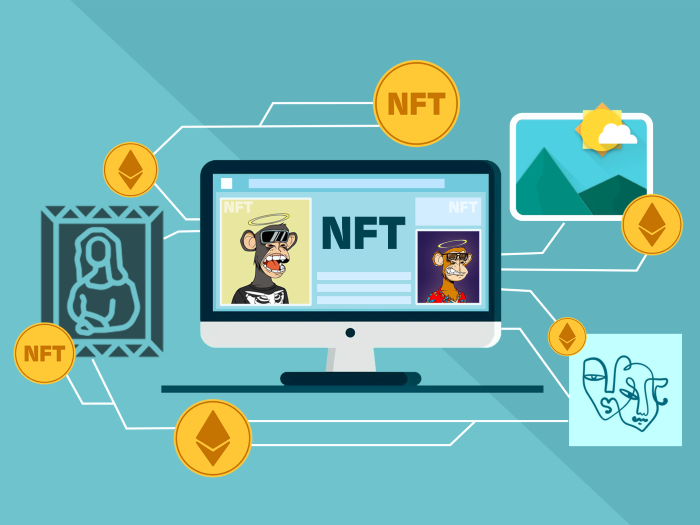 How to Create an NFT Marketplace: Development Guide
How to Create an NFT Marketplace: Development Guide
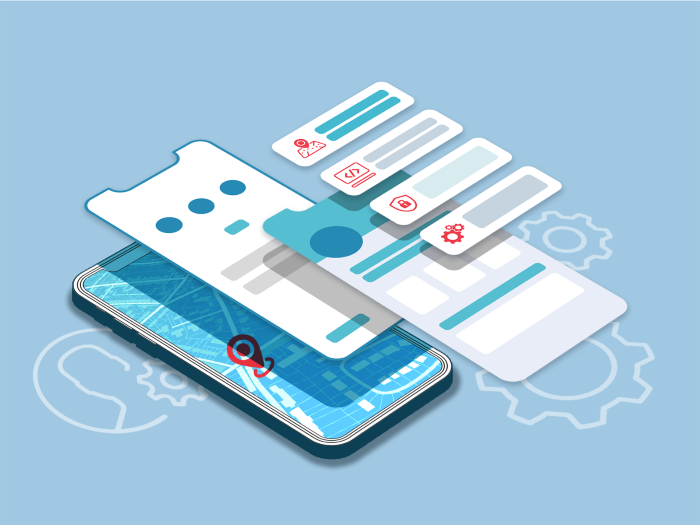 Must-Have Uber App Features: Building a Ridesharing App
Must-Have Uber App Features: Building a Ridesharing App